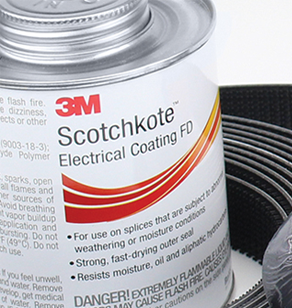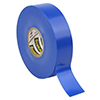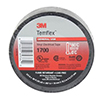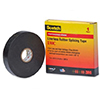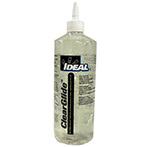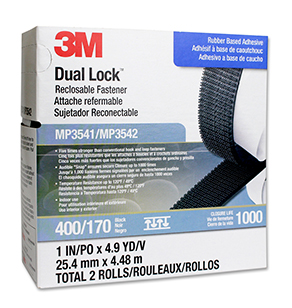Properly Protecting Your Boats Engine and Electrical Connections
Posted by Pacer on 28th Jun 2021
Your boats engine is subject to exposure from salt, oil, gasoline, moisture, alkali, and more on a daily basis. If you do not take preventative measures to ensure the life of your engine you can pretty much guarantee that it will not last as long as it could. The good news is that by employing the use of products such as sealants, tapes, and lubricants you can greatly increase your engines resilience and longevity in even the harshest conditions. The question is what do they do and where do you use them?
What are sealants, tapes, and lubricants?
Tapes and sealants are used to seal and protect electrical splices, terminations, and other connections from elemental and chemical exposure whereas lubricants reduce stress during wire installation and allow for a little strain relief on your wires. That sounds pretty cut and dry but there is a bit more to it than that. In order for you to know which of these is best suited for your needs, we will need to look a little closer at each of these as well as a few others. Let’s start with sealants.
Sealants
Sealants, as we said above, protect parts of your engine electrical connections from a range of environmental hazards. They are commonly used to impede the effects of weather, acid, oil, solvents, and more on exposed portions of wire insulation, splices, and cases. For example, people often use our vinyl electrical tape to cover splices. The issue is when that splice is directly exposed to the elements rather than being an enclosed space. This is where you would use Scotchkote, which has a built-in brush making the application process a simple one. The coating creates a tough oil resistant seal ensuring a longer life to the splice and surrounding around. Whenever you are applying a sealant make sure to use one that offers easy application as well as quick drying. In this way, you will not leave your electrical connections vulnerable. Alternatively, an aerosol-based sealant such as our insulating sealer can be used to make the process even quicker than before. So, now that we've covered sealants, let us take a look at what makes the different types of electrical tape important.
Tapes
There are four main types of electrical tape: Scotch 35, Temflex, Super 33+, and Linerless. Each of these types of electrical tape serve a specific function and offer advantages over the others. Let’s take a quick look at what sets these products apart.
Scotch 35 – This type of tape is made with differentiation in mind. That is to say, Scotch 35 is made in multiple colors so you can use it as an identifying marker. With a resistance to abrasion, oil, UV exposure, moisture, alkali, and solvents, this tape is a solid choice for most applications. To make it even better, Scotch 35 is available in 9 different colors.
Temflex – This is your general-purpose electrical tape that everyone is familiar with. Temflex is the black electrical tape that you will find in most garages and workshops. This is the go to choose when differentiation is not a concern. Flame retardant and lead free, temflex is the most common choice of electrical tape for a reason.
Super 33+ - Super 33+ is the next step up from the previous two types of electrical tape we have looked at. It can handle a greater temperature range making it ideal for use in applications where hot or cold is a concern. To make this type even better, it can handle splices and connection points up to 660V.
Linerless – Linerless electrical tape is the only type available in multiple widths. This is so it can be used in a wider range of applications. Linerless electrical tape is designed for high voltage usage and offers excellent heat dissipation from electrical connections. It can be used to seal bus bars, cable ends, and more.
Lubricants
Lubricants are used to, well, lubricate. That is to say, they are used to make wire pulling a much simpler task. Clear and colorless, this type of lubricant is designed for easy and quick cleanup. Looking for a product that allows for extremely fast wire pulls? You found it. The polymer-based formula is ideal for all electrical and data-com applications. One note worthy aspect of this lubricant is the fact that it is safe to use on all types of wire and cable making it ideal for commercial or industrial sites. Lubricants can prevent insulation damage by allowing a wire to safely pass through an enclosure space with little to no abrasion or impact damage.
Now you can see why it is important to use products such as sealants, tapes, and lubricants. They extend the life of your electrical system, and through that, extend the life of your boats engine and electrical system. Their importance cannot be understated. Do not just trust your boats engine and electrical connections to withstand the harsh environmental conditions where they live. Give them a fighting chance.

Bonus Section:
While we are talking about sealants and tapes, it is important to mention similar products that you may find useful. Before you go, we can take a quick glance at dual lock fasteners.
Dual lock
Dual lock fasteners are a self-adhering, re-closable fastener that can used in a range of applications. Think of hook and loop fastening systems such as Velcro, but imagine an industrial, supped up version. That is dual lock fasteners. It is five times stronger than your conventional hook and loop fasteners and the adhesive back will adhere to a huge number of surfaces. At one inch wide, this type of fastener is the ideal choice for a use in the personal garage, workshops, repair shops, marinas, on the water, or even industrial job sites. Trust me when I tell you, this is the toughest, most durable hook and loop fastener out there.
Looking for other types of products that may be beneficial to you? Check out our catalog of over 9,000 curated products to find the exact item you’re looking for. Just click the button below.

